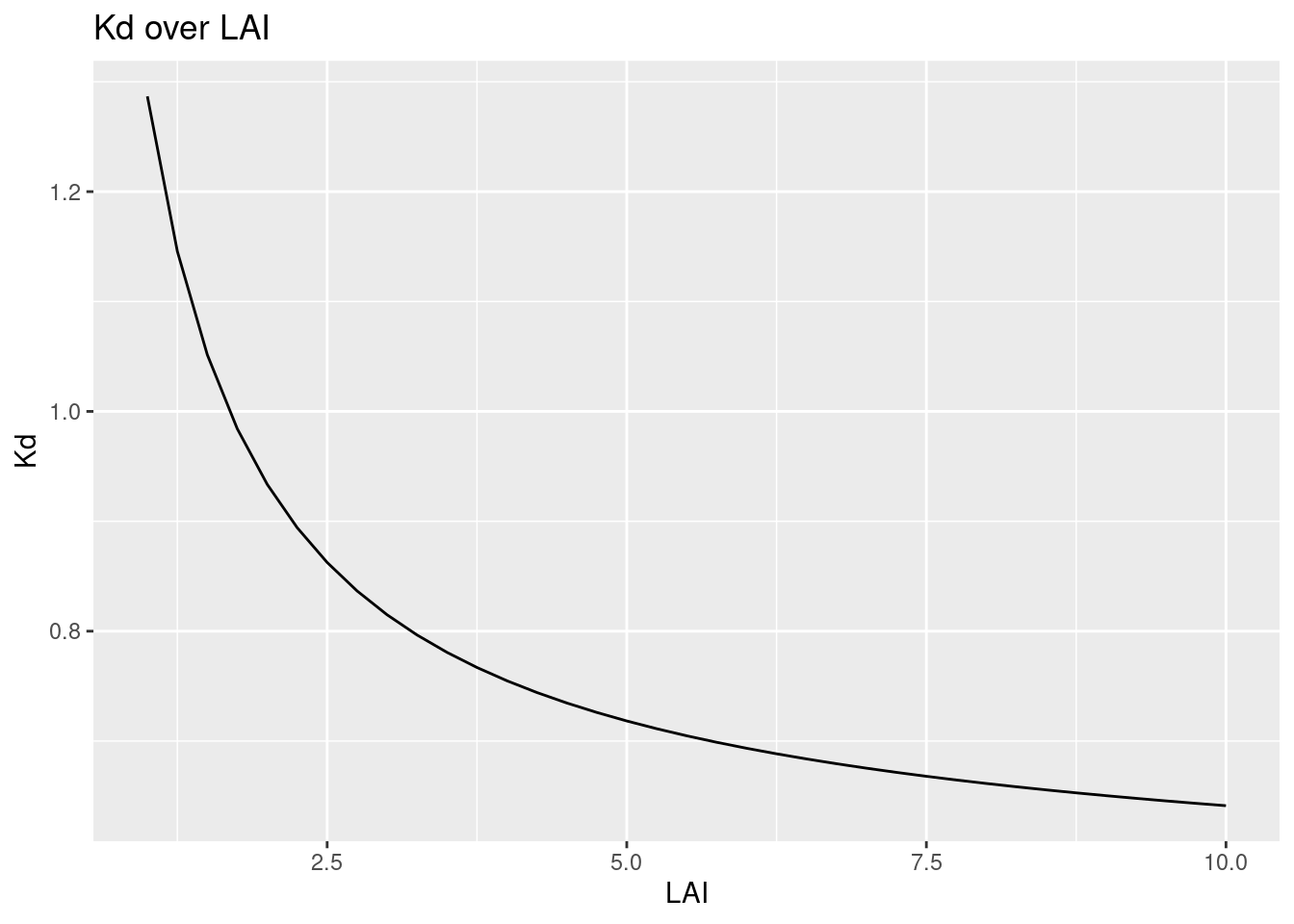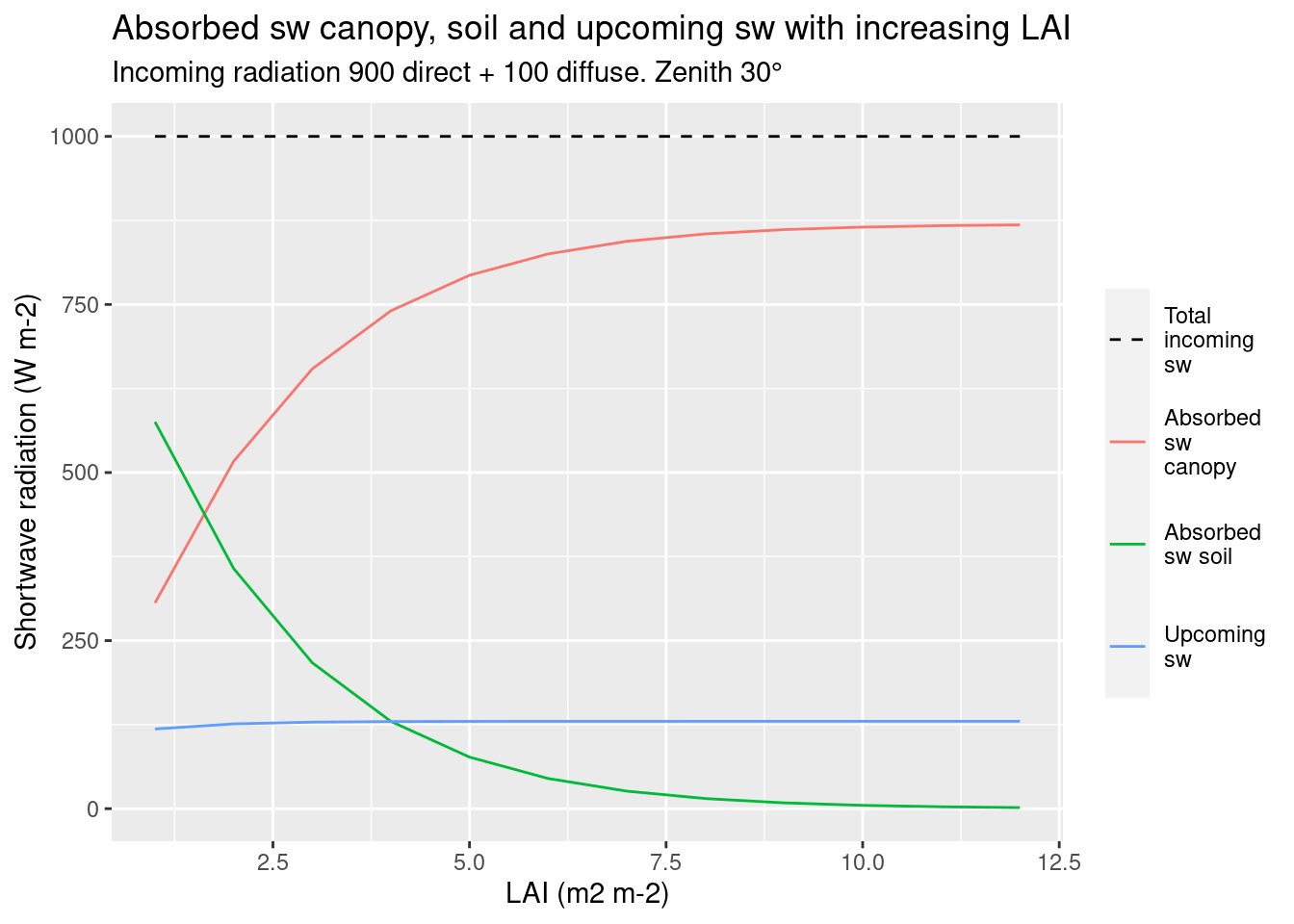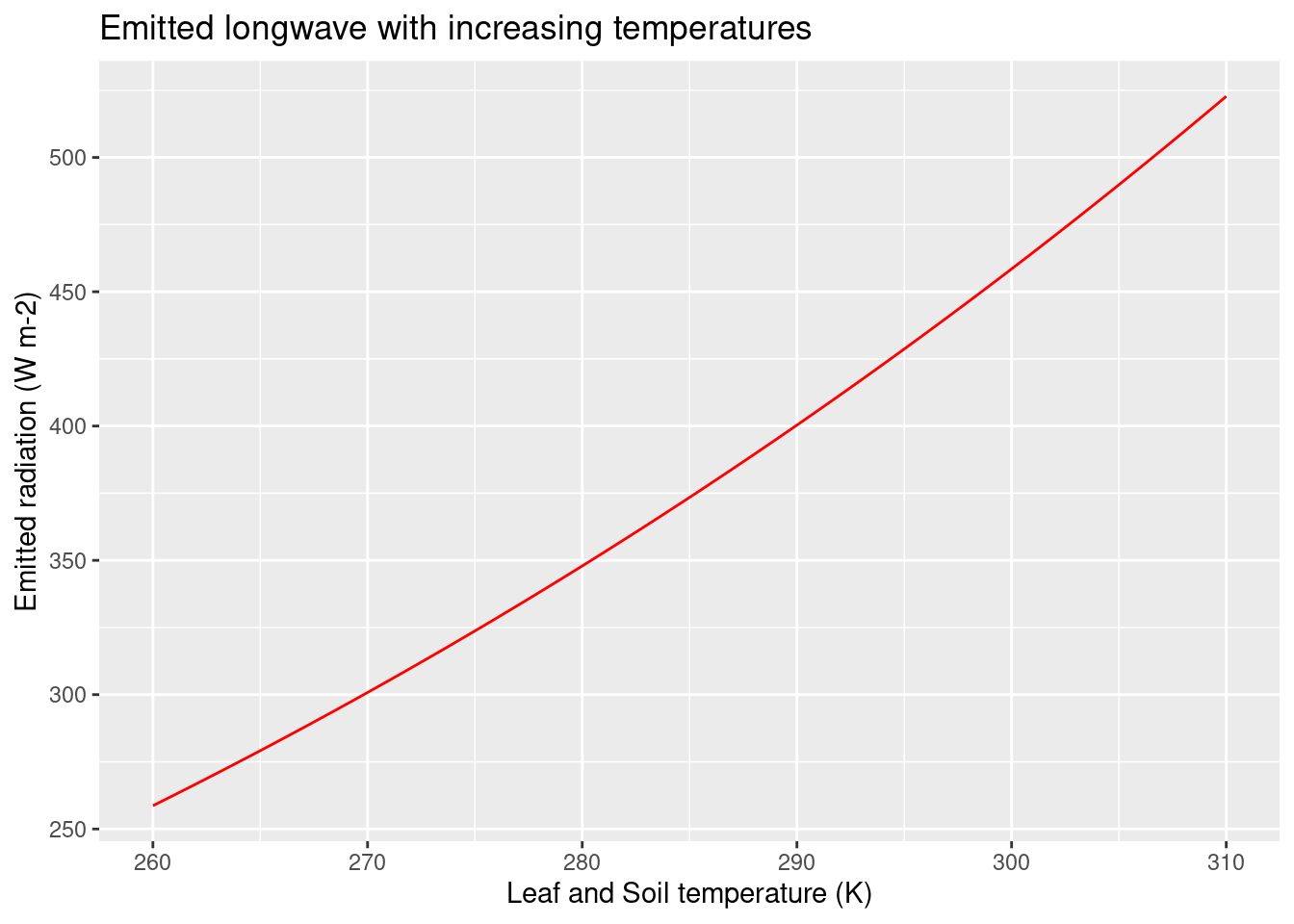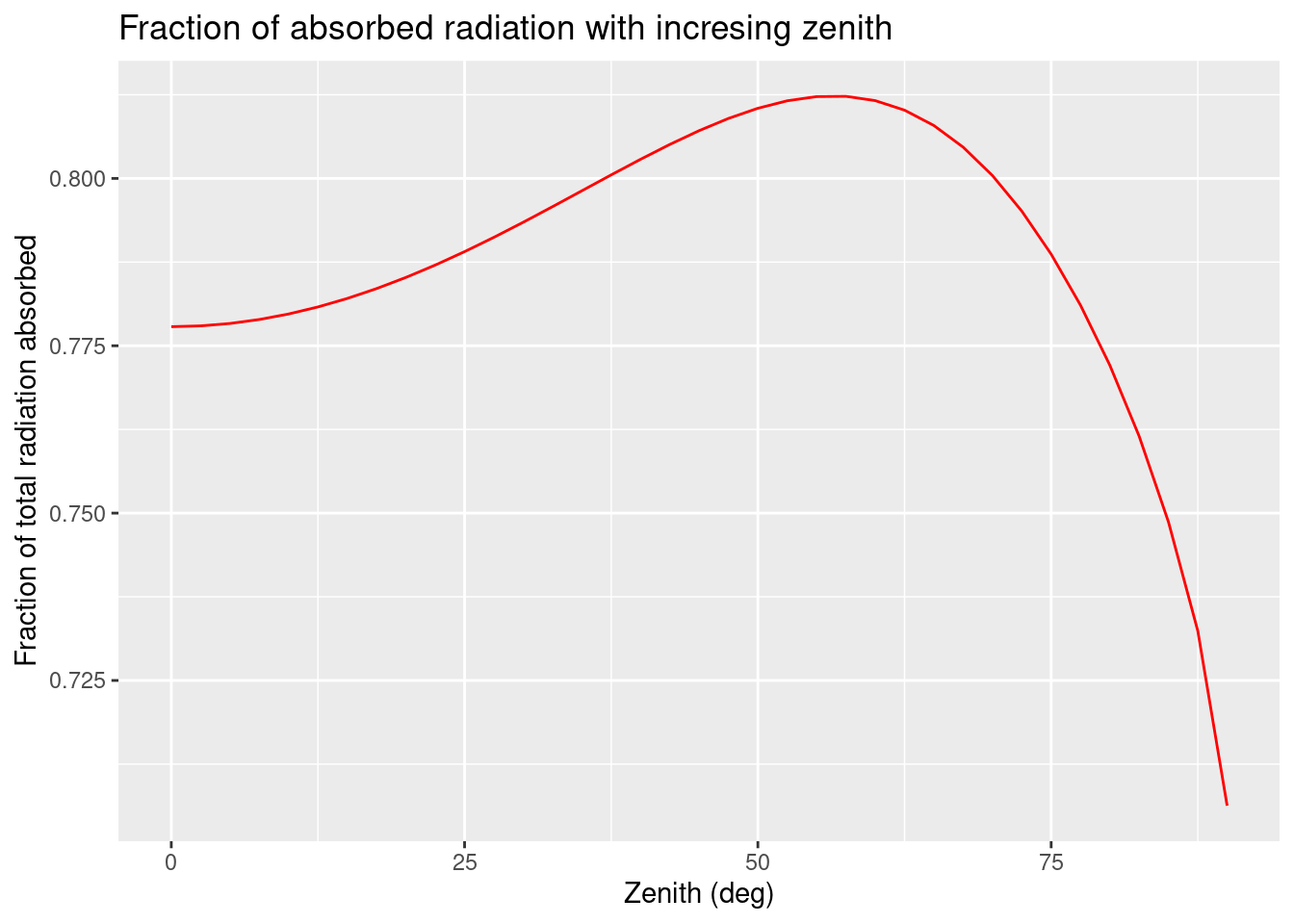Section 5 Discussion
5.1 Model components
After the analyzing the model results and evaluating its performance a more the behaviour of the model components is analyzed.
Kb
The direct beam extinction coefficient depends on the leaf angle distribution and the zenith. The leaf angle distribution doesn’t change hence the variation of the zenith is the only aspect that can influences the penetration of direct shortwave radiation. For zenith inferior to \(30°\) the \(K_b\) has a value of about \(0.5\) (Figure 5.1), then reaches \(1\) with a \(60°\) zenith and eventually start to grow exponentially reaching the theoretical value of infinity when the sun is completely horizontal.
Figure 5.1: Kb over zenith
Kd
The diffuse radiation extinction coefficient does not depend on directly on the solar zenith, as the radiation comes from all directions, but depends on the LAI. The bigger the LAI the smaller the \(K_d\), thus more light penetrates through the canopy (Figure 5.2). The range of the \(K_d\) has a smaller than the \(K_b\). The \(K_d\) showed in this plot is used only by the longwave model, as the 2 stream approximation uses a different \(K_d\), that depends only on leaf angle distribution.
Figure 5.2: Kb over LAI
Absorbed radiation over LAI
The amount LAI influences directly the amount of radiation absorbed. The increase in LAI initially increase the amount of radiation absorbed to then reach an asymptote (Figure 5.3).
The sunlit leaves absorb the majority of the radiation, ranging from \(70\%\) at high LAI values to over \(90 \%\) with low LAI (Figure 5.4).

Figure 5.3: Abosrbed radiation over LAI

Figure 5.4: Fraction of radiation absorbed by shaded leaves over LAI
The variation of LAI influences also the amount of radiation absorbed by the soil, ranging from over \(50\%\) to almost \(0\%\) with high LAI values (Figure 5.5).
The LAI has virtually no impact on the total canopy albedo.

Figure 5.5: Absorbed sw canopy, soil and upcoming sw with increasing LAI
Emitted longwave radiation at different temperature
The leaf temperature have a direct influence on the emitted radiation.
In figure 5.6 soil and leaves temperature change together between 260 and 310 K. This results in an almost linear increase in the emitted radiation.

Figure 5.6: Emitted longwave with increasing temperatures
Absorbed radiation vs zenith
The solar zenith influences the fraction of the solar radiation absorbed 5.7, it increases with the zenith, reaching peak at \(60°\) and then rapidly decreases. The variation of absorbed radiation with the zenith is limited ranging from about \(70\%\) to \(80%\).

Figure 5.7: Fraction of absorbed radiation with incresing zenith
5.2 Conclusion
The model was developed with the goal to be as simple as possible to be able to understand the radiative transfer processes. The model was not intended to be used in real data conditions and its main aim has been achieved with the current version.
Nonetheless, improvements are possible in particular:
- solve the shortwave radiations for the visible and near infrared radiation, as leaves have different optical properties.
- use more accurate equation than the two-streams approximation, like Norman model.
- optimize the performance of the model in order to allow for faster iteration during the analysis.
Regarding the last point an experimental port has been made using the Julia language https://github.com/mone27/canopy-model.jl obtaining promising results (roughly 1000 times faster).